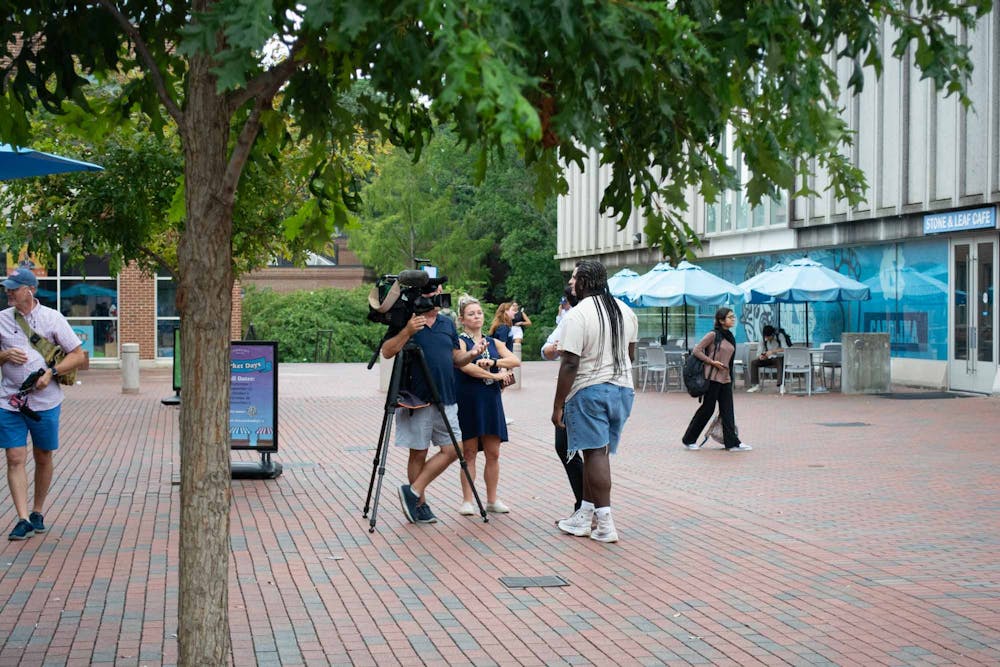Last Wednesday at 2:11 p.m., UNC students received an all-clear Alert Carolina message after their second lockdown in 16 days due to an "armed and dangerous person on or near campus."
After sheltering in place for over an hour, many students' first instinct was to look for their friends and ensure their safety.
But as students left the buildings they had sheltered in, some were met by a reporter with a microphone. News outlets naturally jumped to cover the event — a second lockdown because of an armed individual at UNC in 16 days is an impactful story.
When students were released from lockdown, there was no official confirmation that a suspect was in custody. The University had just issued the all-clear, and a WRAL camera crew was already stationed in the Pit, clamoring to get students on air.
Given that we had already seen reporters flock to UNC's campus after the first lockdown after the death of Zijie Yan, it was hard to feel surprised.
We had to repeat everything we went through on Aug. 28 — the shock, the fear, the waiting. So many students were in the same places they were 16 days prior, as the lockdowns happened at the same time of the day. We were reliving an unimaginable event.
Regardless of this fact, students were given no time to process this situation before being asked to be a primary source for news organizations like ABC11 and WRAL.
We do not believe it should be considered normal to approach reporting on sensitive topics with such haste, even if there is a journalistic precedent for it.
As student journalists, we understand the importance of documenting and informing the community in times of crises. Naturally, coverage of an on-campus event would be near-worthless without first-person student sources. Simultaneously, we think journalists have a responsibility to consider the well-being and safety of those in dangerous situations.




